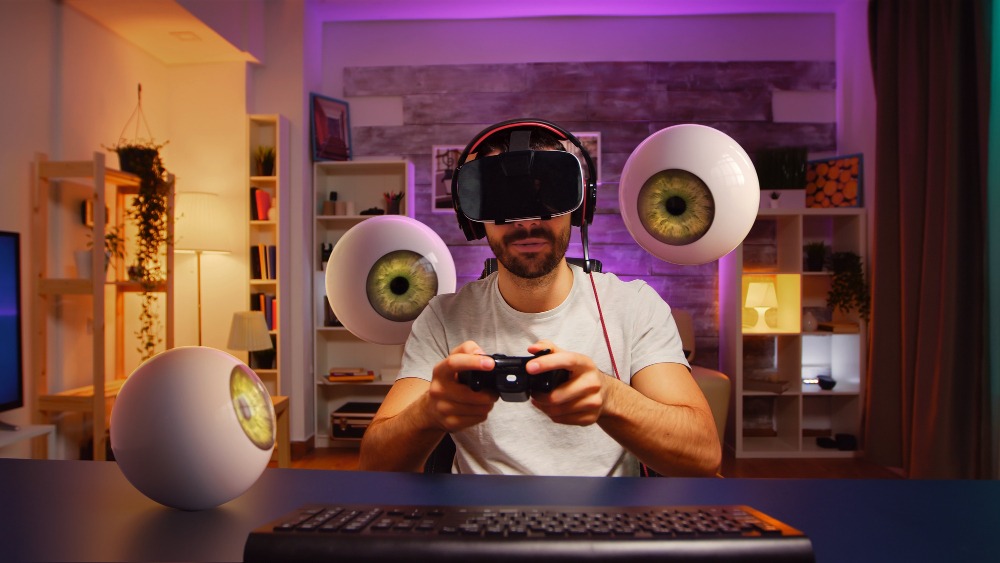The realm of scientific discovery was once reserved for laboratories and researchers with specialized equipment. However, the rise of smartphones has democratized science, empowering everyday citizens to contribute to groundbreaking research. This blog post delves into the exciting world of citizen science and explores how you can leverage your smartphone to make a real difference in scientific discovery, right from your pocket.
The Citizen Science Revolution: Democratizing Discovery
Citizen science, also known as crowdsourced science, involves the public actively participating in scientific research. This collaboration offers numerous advantages:
- Increased Data Collection: With a large pool of participants, citizen science projects can gather massive amounts of data that would be impossible for researchers to collect alone.
- Geographic Scope: Citizen scientists can contribute data from diverse locations, providing researchers with a broader geographical perspective.
- Cost-Effectiveness: Citizen science projects can significantly reduce the costs associated with traditional data collection methods.
- Public Engagement with Science: Citizen science fosters public engagement with scientific research, promoting scientific literacy and awareness.
User Engagement Strategies:
- Real-World Examples: Showcase successful citizen science projects that have made significant contributions to research (e.g., Galaxy Zoo galaxy classification project, eBird bird population monitoring app).
- Infographics and Visuals: Incorporate infographics or illustrations to visually represent the data collection process in citizen science apps, the impact of citizen science on research, or the variety of available projects.
The Power in Your Pocket: Citizen Science Apps
A plethora of citizen science apps are available for download on your smartphone, each focusing on a specific scientific field. Here’s a breakdown of how these apps work:
- Data Collection: Many apps allow you to collect data through observations, measurements, or recordings. Examples include logging bird sightings, monitoring water quality, or recording sounds of nocturnal animals.
- Image Classification: Some projects utilize image recognition technology. You may be tasked with classifying images of galaxies, identifying plant species, or analyzing animal behavior from pictures.
- Gamification: Certain apps incorporate game-like elements to make data collection engaging and fun. You may earn points for completing tasks, compete with other users on leaderboards, or unlock new levels as you contribute more data.
Empowering Discovery: A Glimpse into Citizen Science Projects
Citizen science encompasses a diverse range of projects tackling various scientific questions:
- Astronomy: Projects like Galaxy Zoo have revolutionized galaxy classification by leveraging the power of citizen scientists to analyze millions of celestial images.
- Ecology and Conservation: Apps like eBird and iNaturalist allow users to contribute data on bird sightings and plant identification, providing valuable insights into biodiversity and species distribution.
- Climate Change: Citizen science projects monitor environmental changes by collecting data on weather conditions, water quality, or forest health.
- Medical Research: Some apps allow users to share anonymized health data, contributing to research on various diseases and health conditions.
Enhancing Content Credibility:
- Source Citations: Throughout the content, consider linking to reputable sources (scientific journals, citizen science websites, research institutions) to support your claims and enhance content credibility.
A Balanced Perspective:
- Discuss potential limitations of citizen science data quality and the importance of clear instructions and data verification processes.
Beyond the App: Additional Ways to Contribute
Citizen science extends beyond smartphone apps:
- Scientific Crowdsourcing Platforms: Online platforms like Zooniverse host various citizen science projects where you can participate from your computer.
- Community Science Events: Local science organizations and environmental groups often organize citizen science events where you can collect data in a group setting.
- Science Advocacy: Citizen scientists can advocate for scientific research funding and public science education initiatives.
The Future of Citizen Science
Citizen science is rapidly evolving, and the future holds immense promise:
- Advancements in Technology: Emerging technologies like artificial intelligence can be integrated with citizen science platforms to streamline data analysis and verification.
- Focus on Data Quality: Citizen science projects will continue to refine data collection methods and establish robust quality assurance protocols.
- Deeper Collaboration: Citizen scientists, researchers, and policymakers will collaborate more closely to translate data into actionable solutions for global challenges.
FAQs
Citizen science is revolutionizing scientific research by engaging the public in data collection and analysis. With the power of smartphones in everyone’s pocket, 2024 offers exciting opportunities to contribute to scientific discovery. This FAQ section explores how you can be a part of this scientific movement.
- What is citizen science?
Citizen science involves engaging the public in scientific research. People can contribute in various ways, from collecting data through smartphone apps to analyzing images or classifying objects.
- How can I use my smartphone to participate in citizen science projects?
Several smartphone apps connect you to citizen science projects. These apps often utilize features like:
- Geolocation: Record the location of your observations, contributing to geographically relevant datasets.
- Camera: Capture images or videos of plants, animals, weather phenomena, or other project-specific targets.
- Sensors: Contribute data from phone sensors like accelerometers (movement) or microphones (sound) for environmental monitoring projects.
- What kind of citizen science projects can I participate in with my smartphone?
The possibilities are vast! Here are some examples:
- Astronomy: Classify galaxies or analyze data from telescopes.
- Ecology: Track animal populations, monitor plant growth, or identify invasive species.
- Weather Monitoring: Report weather conditions to contribute to hyperlocal weather data collection.
- Conservation: Help monitor endangered species or document habitat changes.
- Public Health: Contribute to mosquito identification projects or track disease outbreaks.
- Are there any citizen science projects specifically designed for smartphones?
Yes! Many projects are designed with mobile accessibility in mind. Popular platforms like Zooniverse, SciStarter, and iNaturalist offer a wide range of smartphone-friendly citizen science projects.
- What are the benefits of participating in citizen science?
There are numerous benefits:
- Contribute to scientific research: Your data can help scientists answer important questions and make new discoveries.
- Learn about science: Citizen science projects offer a fun and engaging way to learn about different scientific fields.
- Connect with nature: Many projects involve observing the natural world, fostering a deeper appreciation for the environment.
- Be part of a community: Citizen science connects you with a global network of people interested in science and discovery.
- How much time does it take to participate in citizen science?
The time commitment varies depending on the project. Some projects allow you to contribute small amounts of data regularly, while others might require more focused participation for specific tasks.
- Is citizen science data accurate?
Citizen science projects often involve incorporating data validation techniques. Project designers may use techniques like having multiple users classify the same data point to ensure accuracy.
- What are some things to keep in mind before participating in a citizen science project?
- Choose a project that interests you: You’re more likely to stay engaged if you’re passionate about the topic.
- Read project instructions carefully: Understand the data collection protocols and what information is required.
- Be honest and accurate with your data: The quality of scientific results depends on reliable data contributions.
- Can citizen science really make a difference?
Absolutely! Citizen science has contributed to numerous scientific breakthroughs. From discovering new galaxies to tracking the spread of invasive species, citizen science data plays a vital role in scientific research.
- How can I find citizen science projects to participate in?
Here are some resources to get you started:
- Zooniverse: https://www.zooniverse.org/
- SciStarter: https://scistarter.org/
- iNaturalist: https://www.inaturalist.org/
Conclusion
Citizen science empowers everyday citizens to become active participants in scientific discovery. By leveraging the power of your smartphone, you can contribute to groundbreaking research, collect valuable data for scientists, and become a champion for scientific progress. Citizen science is not just about collecting data; it’s about fostering a community of engaged individuals who are passionate about understanding the world around us.





















